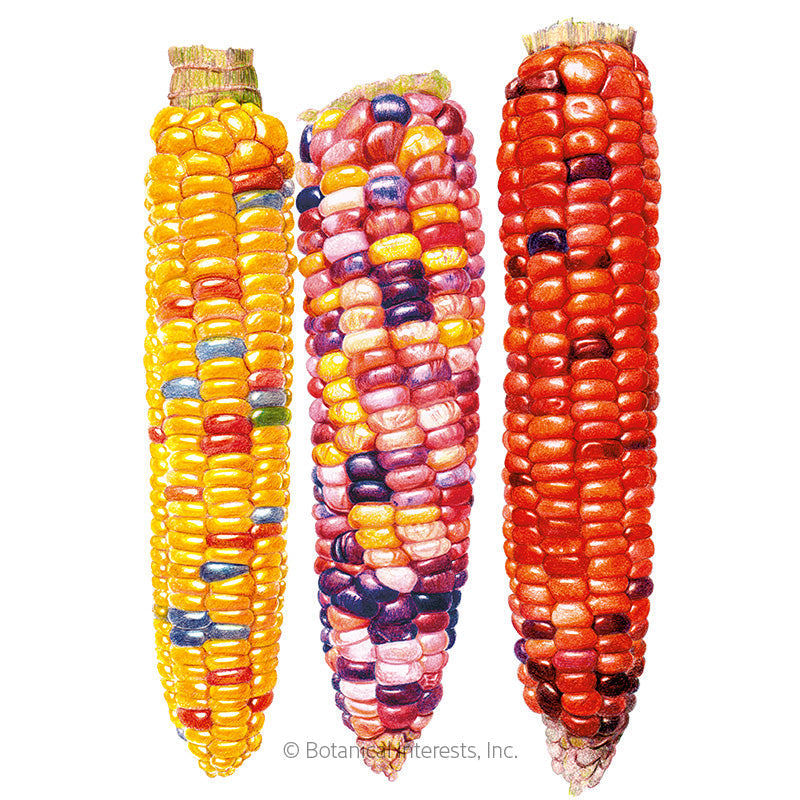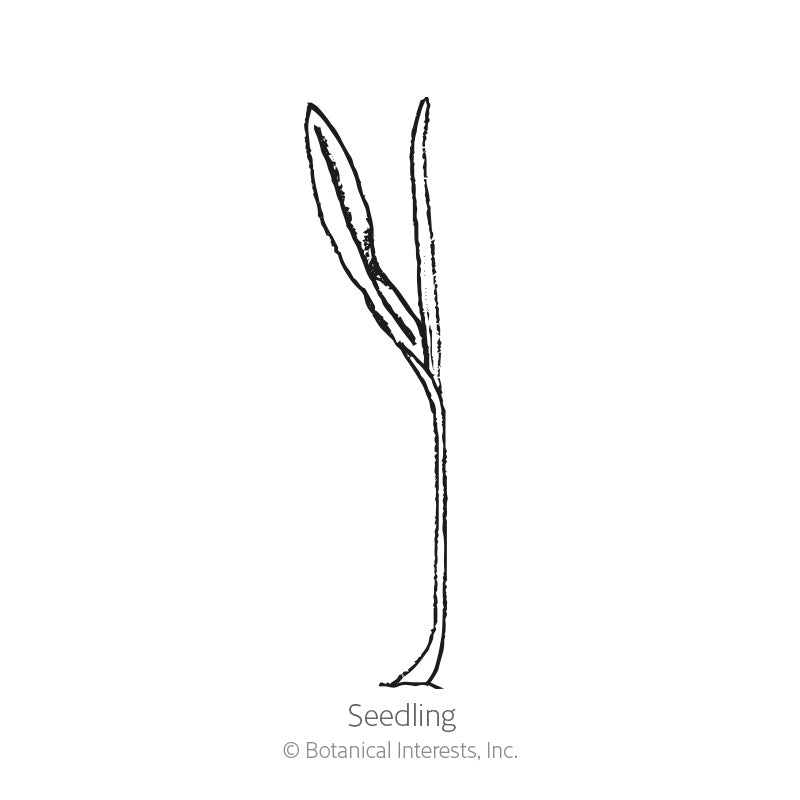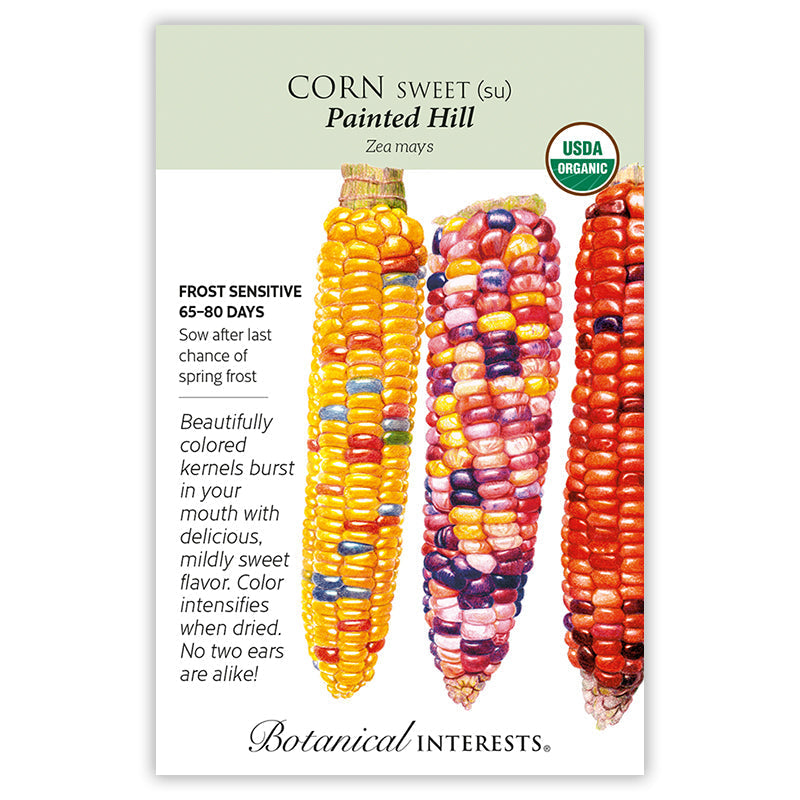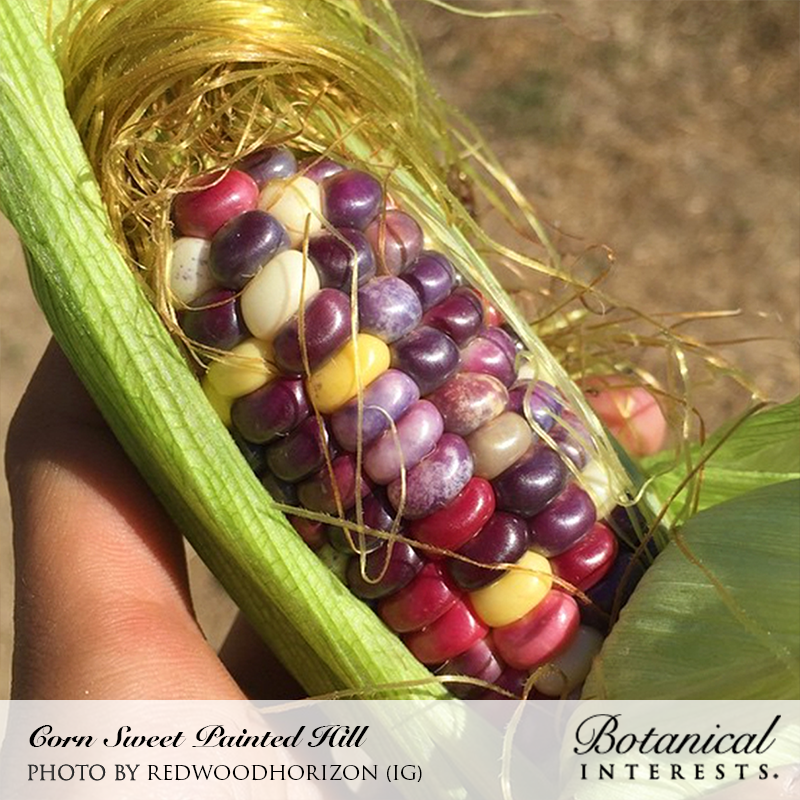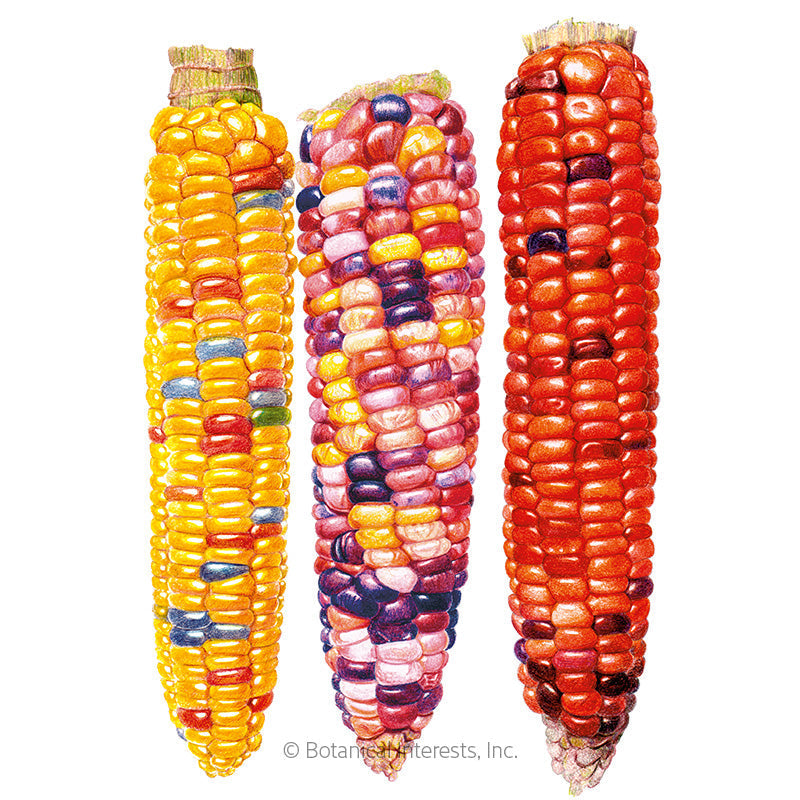
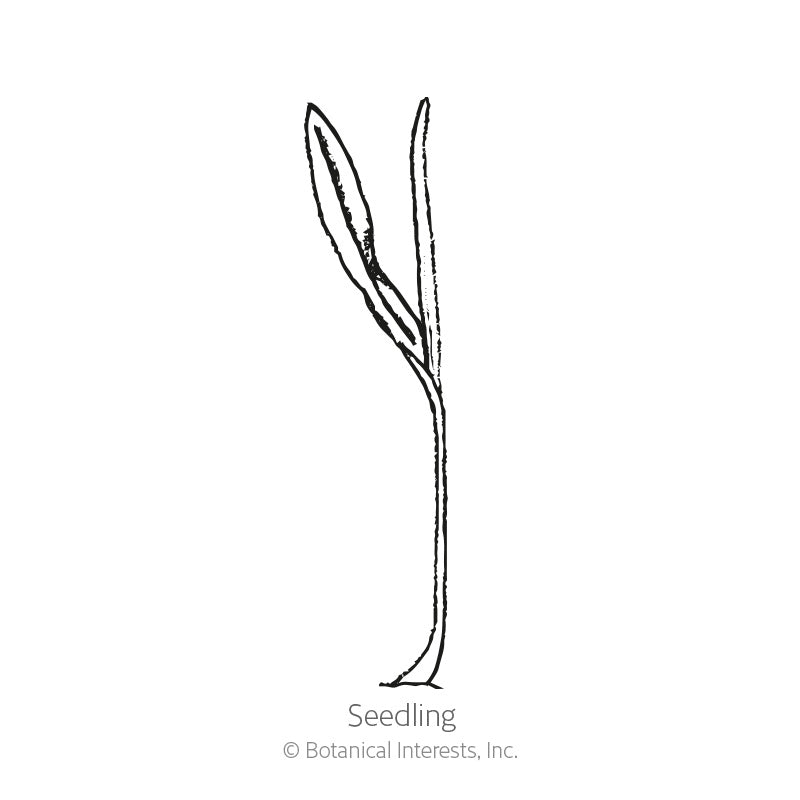
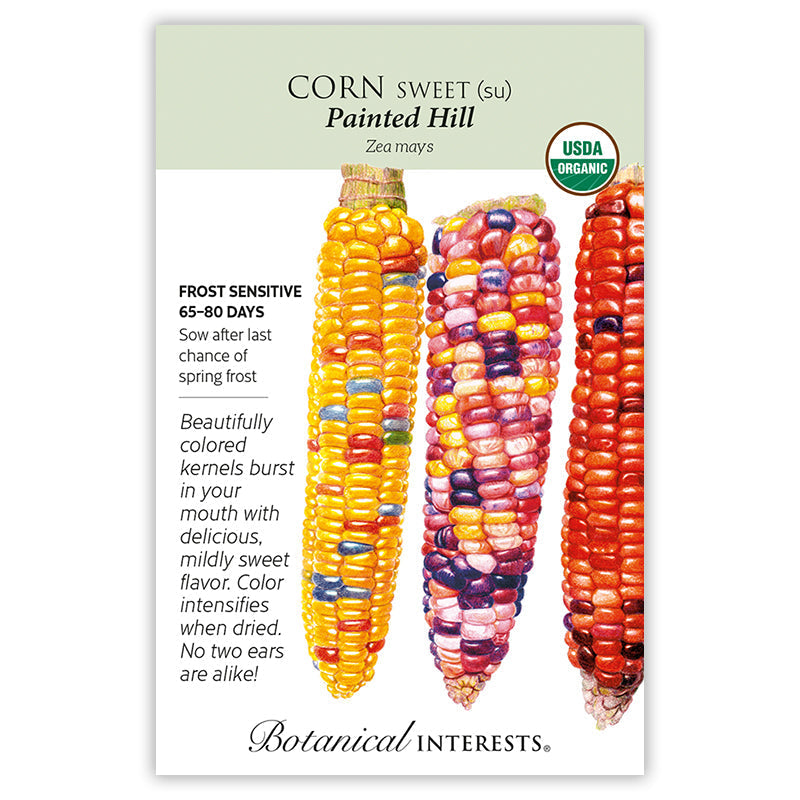
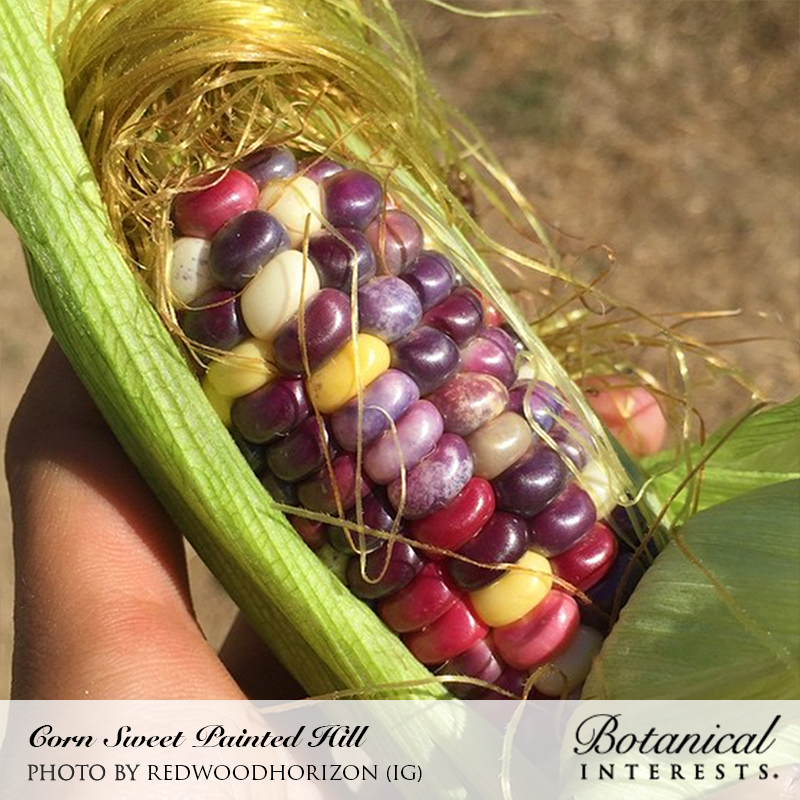
- Variety Info
- Sowing Info
- Growing Info
- Learn More
Variety Info
Days to Maturity: 65–80 days
Family: Poaceae
Type: Sugary type (SU) (Learn More)
Native: Americas
Hardiness: Frost-sensitive annual
Exposure: Full sun
Plant Dimensions: 5' tall
Variety Info: 7" long ears with kernels in yellows, reds, purples, blues, and white. 'Painted Hill' is open-pollinated. Kernel color is pale at the fresh-eating stage. Darker colors develop as ears dry for colorful and unique ornamental corn.
Attributes: Frost Sensitive
Sowing Info
When to Sow Outside: RECOMMENDED. 1 to 2 weeks after your average last frost date, and when soil temperature is at least 60°F; ideally 65°–90°F.
When to Start Inside: Not recommended; roots sensitive to transplanting. Best results occur when seedlings are transplanted less than 2 weeks old.
Days to Emerge: 5–10 days
Seed Depth: 1" –1 ½"
Seed Spacing: A group of 2 seeds every 12"
Row Spacing: 24"–36"
Thinning: When 4" tall, thin to 1 every 12"
Growing Info
Harvesting: Sweet corn is ready about 3 weeks after the silks appear. Harvest when the silks are brown, but not dried, and the husks are dark green; ears should be plump, and rounded rather than pointed at the tip. To test for ripeness, gently pull back the husk and pop a kernel; the liquid should be whitish; if it is still clear, ears are not quite ready.

